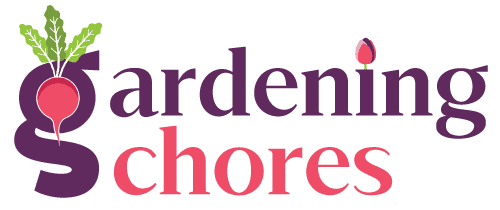
Do you want to keep your summer garden blooming incessantly through the hot season? Great, many annuals do that, but perennials tend to have a shorter flowering time – not all of them though…
While some perennials feel the heat of the summer season, and take a rest, others will keep flowering and you will need them. Otherwise, your garden may have “gaps” or periods of time when blooms are scarce.
I have picked 12 perennial varieties that will bloom from June to the end of August, and even beyond – ideal to pack your flower beds and borders with colorful blossoms. Do you want to find them out?
1: Baby’s Breath (Gypsophila paniculata)
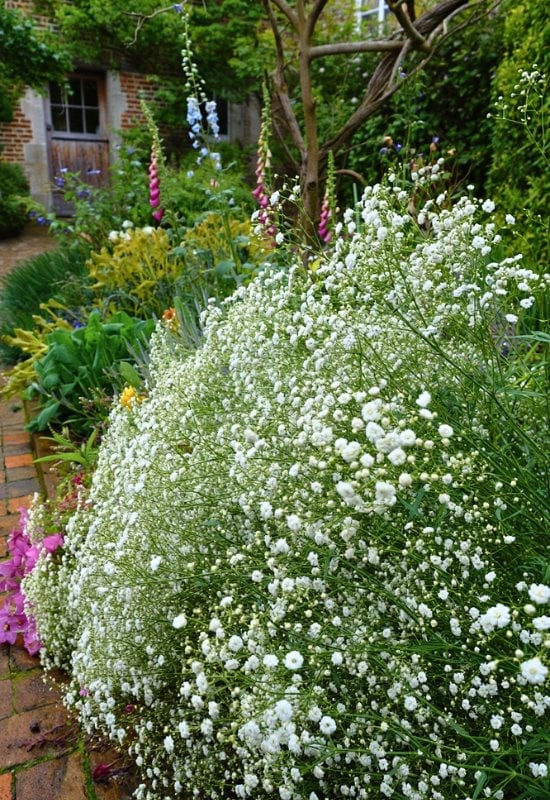
Baby’s breath will not just bloom all through the summer months – it will also make your garden look fresh and airy, in contrast with the hot sunny days of this season. Yes, because its tiny but very numerous little, round and white flowers look like snowflakes!
A much loved variety for cut flowers (think weddings) and to fill hedges from June to the end of august with its delicate clouds of white blossoms, baby’s breath will form round mounds of softness that reach 3 feet tall and wide (90 cm) and it is very cold hardy too – to USDA zone 3!
2: Purple Coneflower (Echinacea purpurea)
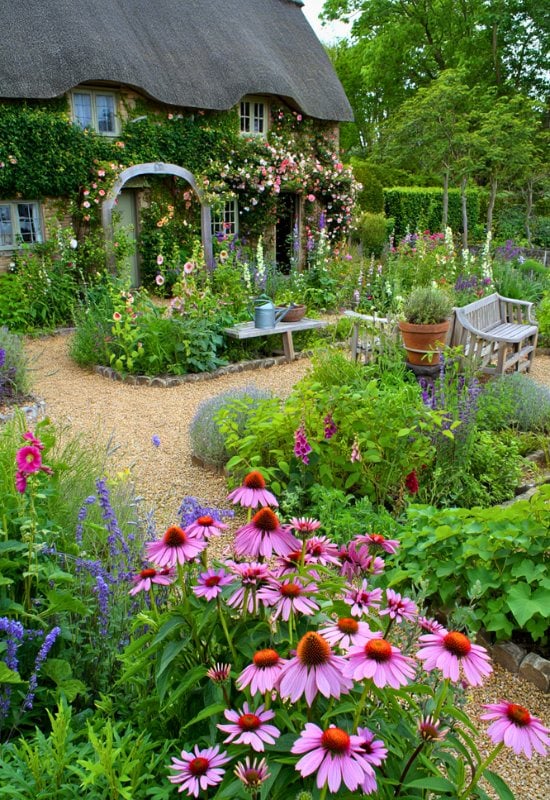
And here’s a popular classic for your garden: purple coneflower! Its daisy-like, showy blooms in warm shades with a rising central “dome” will start opening in early June, and they will keep coming through all summer and beyond, into the month of September. Rising to 4 feet tall (120 cm), this floral display is a real magnet for pollinators, while the large leaves at the base of this perennial are ideal to fill in empty gaps in herbaceous borders.
Cold hardy to USDA 9, easy to grow and self-seeding, purple coneflower is a blooming champion of the hot season.
3: Yarrow (Achillea millefolium)
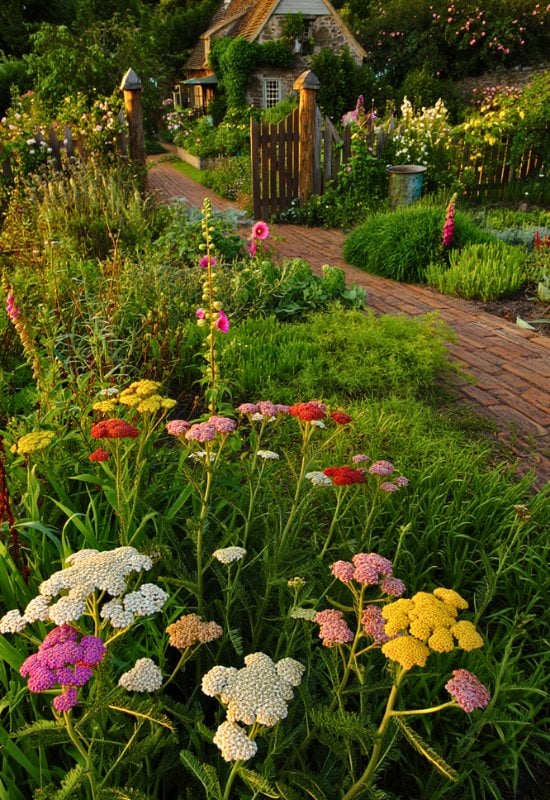
One of the toughest but most rewarding perennials for a naturalized area or herbaceous border is for sure yarrow. Drought tolerant and cold hardy (to USDA zone 3!), this plant will give you large and round clusters packed with tiny flowers in white, yellow, pink and red shades that start in June and persist till September.
On top of the sea of blooms, if you grow yarrow, you will also get very finely textured foliage till frost to enrich your garden. And it is also an excellent and long-lasting cut flower.
4: Shasta Daisy (Leucanthemum × superbum)
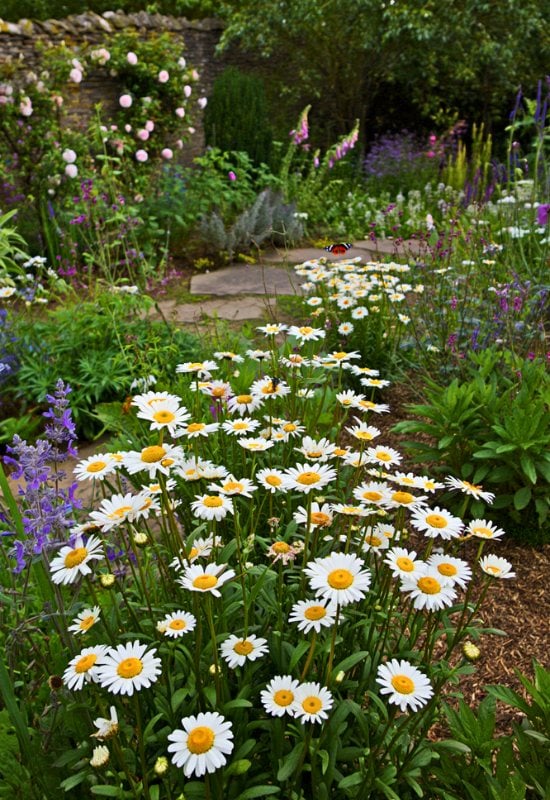
Why not grow a perennial with a really traditional look, but enlarged? I am talking about Shasta daisies, of course, in classical snow white with a golden center, which blooms profusely all the way from the beginning of summer to September (though it may start in July in colder regions). Each blossom can be as large as 5 inches maximum (12.5 cm), so, your garden won’t look empty even when temperatures sky rocket.
Yet another cold hardy (USDA zone 4) and easy to grow classic perennial variety, Shasta daisies are ideal for natural looking borders, cottage and country style gardens, where it will also self seed.
5: False Sunflower (Heliopsis helianthoides)
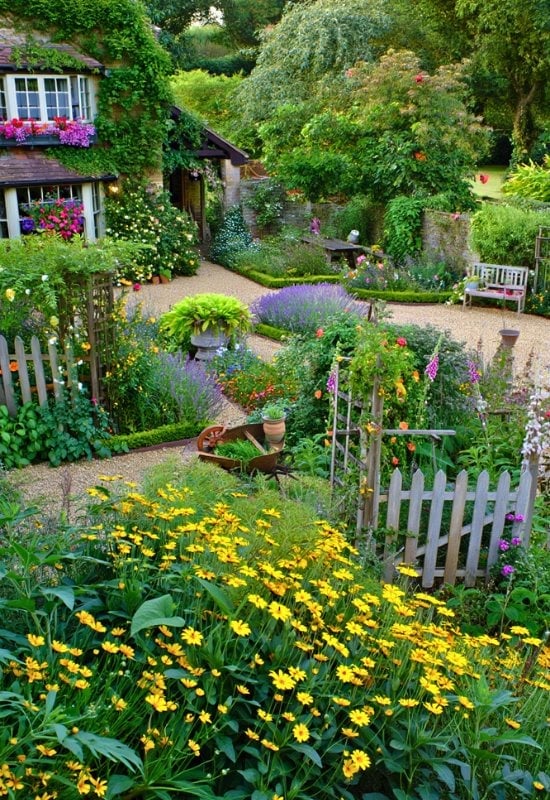
What better choice for your summer garden than a perennial with sunflower-like blooms? Heliopsis helianthoides will flower from June to August with golden yellow flowers galore. Ok, they are only 2 to 3 inches across (5.0 to 7.5 cm), but you will get loads of them to bring light and energy to your garden.
Forming lush mounds of rich green leaves (about 3 feet tall and wide, or 30 cm), false sunflowers will spark up borders, beds and containers through the summer season and attract lots of pollinators as well, even in cold regions, as it is hardy to USDA zone 3.
6: Geranium (Pelargonium spp.)
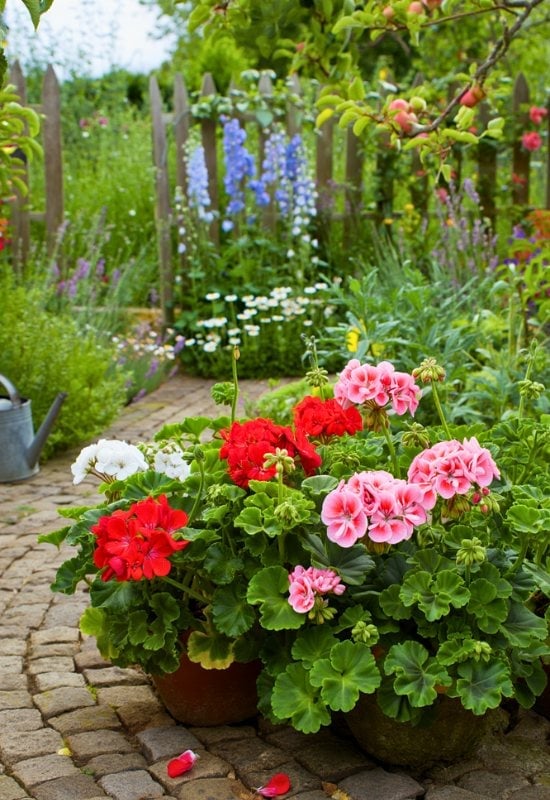
Geranium is the king of summer! Its clusters of blooms in brilliant shades from white to red come continuously from late spring to fall. And if you treat them well and behead the spent blooms, the floral spectacle can be really breathtaking. All this will happen on broad and decorative leaves that have a smell most people find unpleasant – and so do many parasites and mosquitoes! That’s why this perennial is ideal for window sills, as they do in the Alps.
Actually, I suggest you always grow geraniums in containers (and possibly terracotta or stone ones), even if you want them in your flower beds – they bloom better when their roots are constrained, and touch some hard surface. They are not cold hardy (to USDA zone 9), but they are very tough and very easy to winterize.
7: Pinks and Carnations (Dianthus spp.)
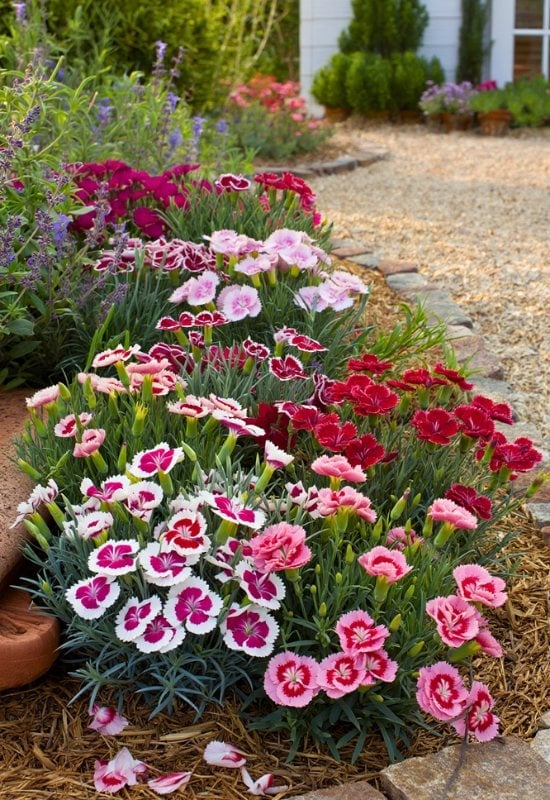
Pinks and carnations can literally bloom from May to September! So, your summer garden will never lack beautiful blooms in white, pink, red end bicolor, single headed or double, but always beautifully ruffled and – super fragrant, of course! You can choose from 340 species of Dianthus and many more cultivars and varieties. Whether you want big blossoms or small ones, there is one for you.
Pinks and carnations can be very cold hardy, depending on the variety (to USDA zone 3) and vary a lot in size, as you know. All flowering repeatedly if not continuously on top of mounds of fine, needle-like foliage (that can be silver bluish as well), all easy to grow, and adaptable to beds, border fronts, edging, containers and… One of the longest-lasting cut flower of them all!
8: Hyssop, or Agastache (Agastache spp.)

Called hyssop by some, Agastache by others, this perennial will keep blooming all the way from early summer to early fall. And not sporadically, but with lots of dense, plume-like spikes of orange, pink, purple, or blue flowers that rise above dense and rich green foliage. But do you know their secret? Get close to the many florets that climb up the stems and you will notice two traits. One, they are fragrant, two they are tubular in shape. And this means that they are favorites with hummingbirds and butterflies.
Agastache, or hyssop, can grow to 4 feet tall (120 cm), though there are small varieties too. This makes this flowering perennial adaptable to beds, borders but also containers. Cold hardy to USDA zone 5, it will keep your garden alive with blooms and winged visitors through summer and beyond!
9: Butterfly Weed (Asclepias tuberosa)
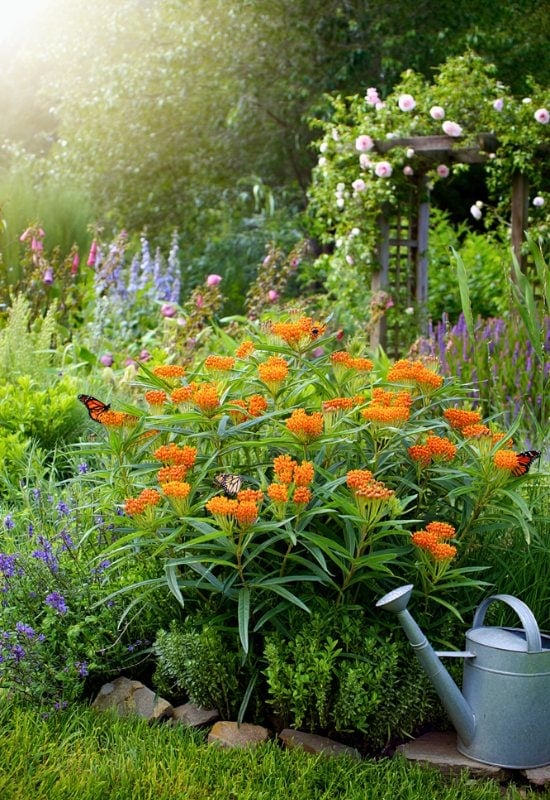
Butterfly weed will definitely start blooming in June, but some varieties and in some regions, it may even open its first buds as early as May. And new flowers will keep coming to the end of this season in August. So, your garden will light up with the energy of its many orange blossoms continuously and, of course, with butterflies (including Monarchs) and many other pollinators.
Native to the Americas, butterfly weed is definitely very cold hardy as well (to USDA zone 3) and it can form lovely clumps of green foliage that reach 3 feet tall and 2 wide (90 and 60 cm). It is ideal for informal looking gardens.
10: Spiked Speedwell (Veronica spicata)
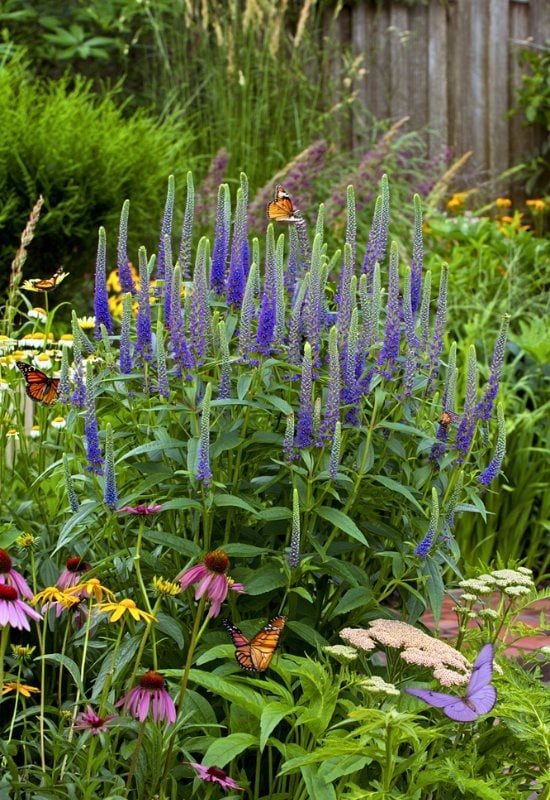
Fancy packing your garden with pollinators and colorful blooms all through the summer months? Then you can simply plant spiked speedwell (A.K.A: veronica), and this perennial will do it all for you, from June to August. Its spikes of blue, purple, pink or white flowers will persist for months, all set on mounds of lush, usually bright to mid green leaves that set off this floral display perfectly well.
Growing to about 3 feet tall (90 cm), spiked speedwell is a super easy perennial to grow to keep your summer garden packed with blooms, but very rewarding indeed. And, like with many other varieties I have picked for you, it is super cold hardy as well, to USDA zone 3.
11: Reblooming Daylilies (Hemerocallis spp.)

But how about if you want to pack your garden with large, showy, lily-like and exotic blooms all summer? Daylilies can do that for you but you will need to choose a reblooming variety. Alternatively, you can mix early, mid and late season cultivars, but, in any case you can keep your green haven rich with blossoms from late spring to early fall if you grow Hemerocallis. An impressive perennial, it has a breathtaking color range, from white to “black” via yellow, orange, pink, red and purple.
Its flower heads can be massive and it’s true, each flower only lasts a day. But, on the lush mound of strap-like leaves, they keep opening for months! Daylilies are regarded as the best flowering perennial ever for many reasons. For example, you can choose from more than 80,000 varieties. They are super easy to grow and propagate and they can be super cold hardy, to USDA zone 3.
12: Treasure Flower, or Gazania (Gazania rigens)
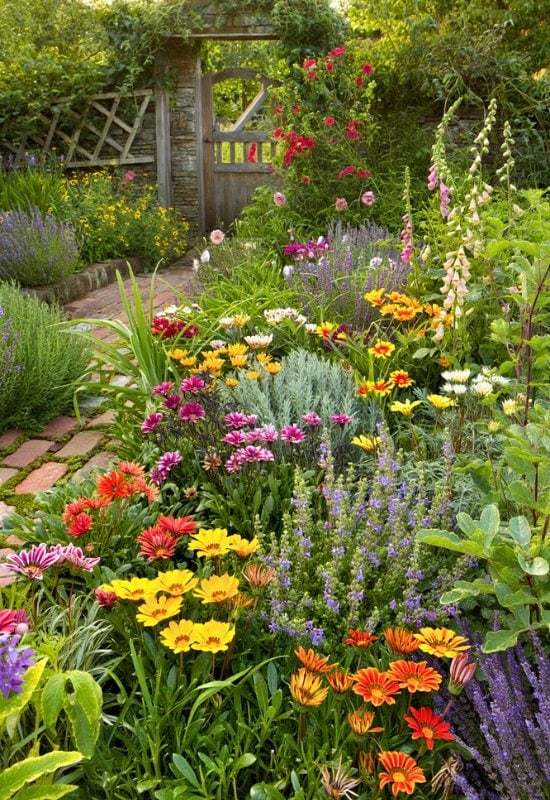
Grow treasure flower and you will be absolutely guaranteed to have lots of blooms in your garden all through summer – from late spring to October, in fact! Daisy-like but massive (up to 24 inches across, or 10 cm), its blossoms are also very showy, and in fact, it’s an exotic perennial from South Africa, with a striking floral display in brilliant shades white, yellow, orange, red, pink and purple, as well as in many combinations, on top of a lovely rosette of elongated leaves.
The only drawback is that treasure flower (or gazania) is not cold hardy at all, only to USDA zone 8. But it grows well in containers (it is only 6 to 12 inches tall and wide, or 15 to 30 cm) and shelter it in winter – or even grow it as an annual.
Summer Flowers Galore in Your Garden!
No more gaps and pauses with flowers in your garden then… Grow any of these perennials and you will have blooms galore from June to August.

Written By
Amber Noyes
Amber Noyes was born and raised in a suburban California town, San Mateo. She holds a master’s degree in horticulture from the University of California as well as a BS in Biology from the University of San Francisco. With experience working on an organic farm, water conservation research, farmers’ markets, and plant nursery, she understands what makes plants thrive and how we can better understand the connection between microclimate and plant health. When she’s not on the land, Amber loves informing people of new ideas/things related to gardening, especially organic gardening, houseplants, and growing plants in a small space.
